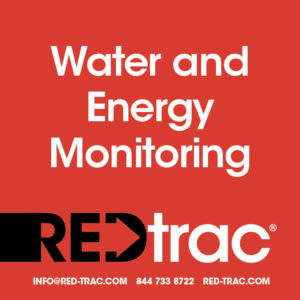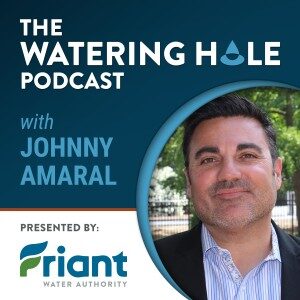There is a saying about laws and sausages and how you really don’t want to see either being made. Looking at legislating in California makes that clear. The Sustainable Groundwater Management Act was passed in 2014. It is actually three bills; AB 1739 by then Assemblyman Roger Dickinson of Sacramento (who lost his bid to become a state senator and ended up a lobbyist), SB 1168 and SB 1319 both by then State Senator Fran Pavley of Santa Barbara. Dickinson’s Assembly District Seven is metropolitan Sacramento. Pavley’s Senate District 27 covers Simi Valley, Van Nuys and Malibu. Neither area has much in common with the San Joaquin Valley economically or hydrologically. You’ll see a trend develop as we discuss Assembly Bill 2201 by Assemblyman Steve Bennett -D, District 37, Ventura.
Everyone who has seen surface water supplies to the San Joaquin Valley systematically reduced knows you can only pump so much before your well runs dry, underground storage is permanently lost to subsidence and the local ag economy collapses. Surface water is the source of groundwater; without it aquafers can’t be recharged. So instead of restoring surface water deliveries the state opted to regulate groundwater and there’s were SGMA came from.
Non-adjudicated, medium and high priority subbasins had until 2017 to form Groundwater Sustainability Agencies. If there was land that wasn’t included in a GSA the county became the default GSA. If the county didn’t want the responsibility then groundwater management of the non-GSA land went to the State Water Resources Control Board’s tender mercies. That was a motivator. No one wanted the State Board managing any local water supplies above or below ground.
All the land in the San Joaquin Valley successfully found a home in a GSA. Then the big, heavy lift started. Each subbasin had until the end of 2020 to submit a Groundwater Sustainability Plan showing how the subbasin will avoid the six undesired results listed in SGMA: lowering groundwater levels, reduction of storage, degraded water quality, land subsidence, surface water depletion and seawater intrusion within 20-years. All of the GSPs were submitted on time to the Department of Water Resources. None of the GSPs from the Southern San Joaquin Valley were deemed adequate. DWR provided some guidance in helping the GSAs to get the GSPs up to snuff and resubmitted by July 27th. All of the rewritten GSPs were submitted on time.
All of the above is a big deal. SGMA emphasizes local control and local men and women created a new, separate layer of government from nothing. A plan is in place to get the groundwater situation under control where there was none before. There are gaps in the data available but research has been, is currently and will continue to be intensely pursued. Each new finding adding to the picture of what is happening to the water under the Valley’s floor.
Also it would have been nice to have had some rain instead of starting to implement SGMA in drought conditions. There are two reservoirs in Sacramento Valley, the state’s Oroville and the fed’s Folsom carrying most of the water storage. So perhaps more storage? The majority of California’s current water infrastructure was built when the state’s population was 16 million. Construction was wrapped up in the 1960s. Now we have 40 million people who all need water.
Outside Help
Under a mix of political pressure and common sense Governor Gavin Newsom declared a drought emergency on March 28th. One provision of his Executive Order N-7-22 was for agencies issuing well permits to obtain written verification from the overlaying GSAs acknowledging the new “well would not (1) be inconsistent with any sustainable groundwater management program established in any applicable GSP and (2) decrease the likelihood of achieving a sustainability goal for the basin covered by such a plan:” It also said a permit can’t be issued for a new well without first determining it’s not likely to interfere with existing nearby wells and not likely to cause subsidence.
Where did Newsom get that idea? Who knows? One hint could be in February Assemblyman Bennett submitted AB 2201 and it’s tighter than Newsom’s order. Unlike Newsom’s executive order that ends with the drought, AB 2201 enshrines not only everything in the order but adds more regulatory burdens. According to the report presented to the Senate Committee on Governance and Finance, Chaired by Valley Senator Anna Caballero, the poor soul applying for a permit has to provide a written report prepared by professional engineer or geologist concluding the new well won’t cause interference with existing, nearby wells and not likely to cause subsidence.
Once the GSA signs off on the permit, the applicant pays for a conclusive engineering report, the permitting agency considers all the reports as well as any public comments it post the permit application on its website for at least 30-days. Excluded under AB 2201 are permits for wells with less than two acre feet annual output for domestic use or wells providing for public and state water systems and permits for wells in adjudicated basins.
Thank You Very Little
The unintended consequences of legislation and this case executive orders as well can be harsh. For example California briefly outlawed alligator hides and products a couple of years back. The law was originally written in the early 1970s when the alligator population of Louisiana was down to only 100,000. Now there are three million of the swimming dinosaurs in a state with only four million people. Alligators are no longer threatened as a species and the sale of alligator products was used to finance their comeback. But under former Attorney General Xavier Becerra with the help of the Center for Biological Diversity an as yet undisclosed amount of taxpayer money was flushed down the toilet in federal court when Louisiana stomped California in a lawsuit forcing it to once again allow the sales and importation of gator parts.
with the help of the Center for Biological Diversity an as yet undisclosed amount of taxpayer money was flushed down the toilet in federal court when Louisiana stomped California in a lawsuit forcing it to once again allow the sales and importation of gator parts.
After the executive order was issued there was chaos in well permitting throughout the Valley. GSAs didn’t know their level of liability or involvement; counties were just as unsure. In the meantime wells weren’t drilled and the economy took a hit and suffered needlessly.
The provision in AB 2201 to require a permit be posted online for 30-days wasn’t written by anyone who’s lived through a summer in California’s Central Valley. There aren’t many living things that can go 30-days without water. There aren’t any ag related businesses that can go 30-days without water and all the business in the Valley is in someway ag related.
Here are some comments from the senate committee report. The report states Bennett wrote, “. . . counties are not tasked with reaching groundwater sustainability and typically issue permits without consideration to prevent undesirable impacts or permanent damage to aquifers, communities and infrastructure. AB 2201 furthers the legislative intent of SGMA, which granted authority to GSAs to regulate extraction.”
I don’t know which counties Bennett’s thinking of. I’ve been to at least 100 GSA meetings in the San Joaquin Valley and I can’t think of one that didn’t have someone from county staff present when forming GSAs and developing GSPs. I can think of four GSAs with county supervisors on the board. Maybe Ventura County can afford to allow its infrastructure to be permanently damaged by lax permitting, but I doubt it. And I can tell you there isn’t a county in the Valley unaware of SGMA.
Under Home Rule the committee report stated, “. . .SGMA struck a careful balance between exercising state control and oversight and preserving local authority.” It continues, “It endowed GSAs with broad authority to regulate groundwater extraction, but did not mandate that they used any particular power. Furthermore, SGMA left certain land use authorities for cities and counties intact, including well permitting. It allowed comments to flow back and forth between GSAs and land use agencies when developing GSPs and general plans, respectively.”
The report states, “AB 2201 takes a different approach: it requires the same policy in every medium and high priority basin the state, regardless of the specific conditions in those basins and whether the GSP is functioning as intended.” It then asked the question, “Should the state impose a one-size-fits-all approach to permitting new wells that erodes the land use authority of cities and counties?”
Under an observation in the report titled If it walks like a duck. . . the question of whether or not requiring a permit to be posted online 30-days triggers CEQA was raised. Depending on if the permitting action is ministerial or discretionary things could get complicated and even more expensive. It states, “These requirements may introduce an element of discretion into all well permitting applications, potentially triggering CEQA, which may entail significant time and cost to complete the necessary environmental studies. The Committee may wish to consider amending AB 2201to remove these provisions or modifying them in such a way so as to avoid including CEQA review into well construction permits.” Emphasis added.
Next under the heading That sinking feeling. The report points out AB 2201 requires applicants to get a report from a professional engineer or geologist to, “. . . conclude that a well would not cause well interference or subsidence that damages nearby infrastructure.”
The report found this provision will not only increase the costs of any such studies and expose the professionals to liabilities but may not even be feasible. As the report stated engineers and geologists don’t usually write reports that definitively conclude the wells wouldn’t have those effects. These types of reports are typically informational. Also, the Water Code already has a similar provision for well interference.
“Finally, analyzing whether a well will likely cause subsidence, and particularly whether that subsidence will cause damage to nearby infrastructure, is a substantial increase in the level of analysis required. Moreover, subsidence is already an “undesirable result” under SGMA that the plans must avoid to achieve sustainability. Since AB 2201 also requires the GSA to find that the proposed well wouldn’t be inconsistent with a GSP and wouldn’t impair a sustainability goal, the consideration of subsidence should already be built into the GSA’s review of these permits. To ensure the feasibility of the requirements of the bill, the Committee may wish to consider amending AB 2201 to require the written report to “indicate,” rather than “conclude,” that a well is unlikely to cause well interference using the definition in existing law.”
Next under report observation six Response time. “Opponents of AB 2201 state that GSAs can be small agencies that may not have significant staff to support their activities, and thus may not return the verifications required by the bill in a timely fashion. To ensure that GSAs act promptly on well permits, the Committee may wish to consider amending AB 2201 to require GSAs to respond to a notification by a permitting agency of a well permit application within a specified time period.”
Just when I was warming up to whoever is writing these observations. Maybe I’m missing something but if a GSA doesn’t have enough staff and resources to return well permit verifications in a timely fashion how is requiring them by law to turn them in on time going to solve the problem?
The next section Not me states AB 2201 includes a very limited set of exemptions that are so narrow that, “. . .despite the likely minor effects, well owners would still need to go through the bill’s more intensive permitting process.” It recommend including more limited exemptions. I’ve heard there has been an exemption added. If a well depth is 15 percent or less the depth of the deepest wells in the area it will be exempted.
Let’s be clear was the next section of the report, “SGMA allows the GSA to request that the city or county send them well permit applications, but leaves it up to the city or county to determine whether they should. To maintain consistency between this bill and SGMA, the Committee may wish to consider amending AB 2201 to modify SGMA such that cities and counties must provide well permits to the GSA if the GSA makes such a request.” A reasonable observation.
Bennett’s Response
It can sometimes be difficult to gain access to a politician by media outside his or her area. It’s not a slight, local media reaches constituents and that’s who an elected official is supposed to represent. However, I was able to get in contact with Assemblyman Bennett’s staff and while I wanted a live phone interview we were able to work out a written interview. Fair enough. They don’t know me and reporters have a reputation somewhere between Amway salesmen and on hold telephone music.
So I sent Bennett some questions about AB 2201 and received a polite, timely response. The questions included:
- How many counties and GSAs are already coordinating well permits?
- What GSAs and county well permitting officials did you consult before writing the bill?
- Were GSA and county staffing considerations considered when writing this bill?
- How much of your district’s economic activity will be impacted by the passing of AB 2201 and to what degree?
- How much of the state’s ag economic activity will be impacted by the passing of AB 2201 and to what degree?
- SGMA was sold as including local control, does AB 2201 remove part of that local control?
Now for my most important question – what question should I ask you? (And what’s the answer? You’d be surprised how many people don’t answer.)
This is the response I received:
Dear Don,
I genuinely appreciate you taking the time to reach out to our office and understand AB 2201 and its intent. You have asked many good questions but I will not be able to address each one individually. However, I will say that California has a severe groundwater overdraft problem. This bill addresses one major weakness: the local agencies responsible for ending the overdraft do not have a voice in permitting new wells into the very basins they are supposed to end the overdraft activities in. This straightforward bill simply gives them that authority. Since the agencies are local, this keeps control at the local level.
I appreciate your technical questions but I simply don’t have time to respond to each one. Although, I really appreciate your final question, “what should I ask you?”
Question: What is a commonsense way to address this lack of connection between the oversight agency and the introduction of new wells?
Answer: AB 2201
Stay well,
Assemblymember Steve Bennett
A Hydrogeologist’s Response
I asked a client, Chris Johnson PG CHg Hydrogeologist and owner of Aegis Groundwater for his insights on the well permitting process as laid out in AB 2201. I think you’ll find his take interesting since AB 2201 could be a financial windfall for hydrogeologist.
Johnson writes, “Where to start?
- There are probably not enough privately employed registered Engineers and geologists, or Certified Hydrogeologists, to meet the demand for this level of assessment in advance of such permitting.
- The cost of such an assessment, which will not be conclusive to the degree that would likely be desired on the part of the State, would be considerable.
- The time for such assessments, which would include attempts to obtain permission from neighboring well owners to access their wells for the assessment, assuming they would be cooperative at all (and likely would not be), would add weeks to the permit application process.

- Assessing potential interference will be difficult, and time consuming, and costly, but it can be done.
- Assessing the potential to exacerbate subsidence is almost impossible, and at best will be speculative and highly subjective.
- The shift of liability to private professional engineers and geologists/hydrogeologists will certainly raise their level of liability, to the point that some may find their insurance agencies may not cover such work.
- Perhaps most importantly, no consensus has been achieved, either in an ad hoc effort, or something more organized, as to what the “minimally acceptable standard of care” will be for such reports. As such, currently the best one might hope for is a professional “opinion”, which may be thoroughly unsuited for the goals of SGMA.
“A thoughtful assessment of the bill’s application could have concluded that neither the GSA, nor the County, had the expertise to address these nearly impossible to answer questions. Carrying that train of thought further, one would come to the conclusion that there are experts who exist that at the very least have the ability to understand and at least partially answer those pressing concerns.
“How many professional engineers, geologists and hydrogeologists did Assemblymember Bennet (or staff) reach out to, and discuss the potential for such assessments to be conducted in a financially supportable manner, and in a timely fashion?”
be conducted in a financially supportable manner, and in a timely fashion?”
My Response to Bennett’s Response
As I stated above I did receive a response and I appreciate that. And he did answer two of my questions and I italicized his answers to be clear. But when you get down to it Mr. Bennett didn’t really address any of the concerns raised by AB 2201. I wrote him back and reworded the questions but I never did get them answered. I want to know why this bill was written. The counties and GSAs were already working together. I know for a fact Fresno County and the North Kings GSA were well on their way to working out sharing system that would keep both of them informed about well permits. The system they worked out – on their own under local control – didn’t cost anything extra, overextend staff or trigger CEQA. Other counties were working on similar exchanges of information. It was all a part of developing a new layer of groundwater regulation to complete SGMA.
AB 2201 raises some great concern that politicians from out of the Valley will take it upon themselves to add more parts to SGMA. The goals get moved and the process becomes more and more complex, cumbersome and eventually the local control is diluted and the folks who have to live with and implement SGMA are left with another Sacramento created High Speed Rail of a mess.
The Company You Keep
One of the more interesting portions of the committee report on AB 2201is who supports it and who doesn’t. There are 80 members of the Assembly and 68 of them voted on the bill. Twenty-four of those votes, about a third were against. The Assembly Water, Parks & Wildlife Committee went eight to five, almost a fourth. The Assembly Appropriations Committee went 12 to four, a fourth voted no.
Here’s a selection from the list of who supports AB 2201. Former State Senator Fran Pavley leads the way. The California Coastkeeper Alliance, a group on the record as stating the current water rights are illegitimate, therefore instream flows must be increased and senior water rights voided. Others are: Environmental Working Group, Leadership Counsel for Justice & Accountability, Natural Resources Defense Council, Sierra Club California, Union of Concerned Scientists and We Advocate Through Environmental Review. There are others but this will give you an idea of what anti-agricultural groups are supporting the bill.
Who’s opposing? Here’s a selection from that list: it starts with the African American Farmers of California. Also: Almond Alliance of California, Association of California Water Agencies, 17 crop associations from almonds to wine, the Farm Bureau, the California Chamber of Commerce and 15 other chambers of commerce.
Here’s something interesting, in opposition are the Counties of: Fresno, Kern, Kings, Merced, San Joaquin, Stanislaus, Tulare and Madera. It appears AB 2201 isn’t popular with the GSAs and water districts either, in opposition: Fillmore & Piru Basins GSA, Kern Groundwater Authority GSA, South San Joaquin Irrigation District and United Water Conservation District. There are others but it will give you and idea of what pro-agriculture and business groups are opposing this bill.
AB 2201 must still pass through the appropriations committee. My sources in Sacramento tell me it will pass. So, that leaves the off chance the Governor could veto it. But unless this bill dies or is amended it looks like AB 2201 will add a great amount of expense, liability and exposure to a part of the state already reeling under inflation, regulatory burden, actual drought, supply chain stressors and state government inaction on water quality.
In the would of, could of, should of file – it would have been good to determine if there was a need for a legislative fix on the local well permitting process before writing AB 2201, it could die or be amended in a way that can actually help and from now on politicians should not assume they know better than the people.
Closing Thoughts
AB 2201 reminds me of a joke I think President Ronald Regan used to tell, or at least one kind of like it, now that I consider the technology involved.
A cowboy was out riding his herd when a man drove up. He told the cowboy, “I bet you I can tell you how many cows you got without counting them. But if I do you have to give me a calf.” The cowboy thought a moment and said he’d like to see that.
The man took out a computer, got a link on his cellphone and pulled up a Google Earth image. He took a screen shot, loaded the image into an app and out spit an estimate of 300 head of cattle. He told the cowboy he had 300 head of cattle and grabbed an animal and put it in the trunk of his car.
As the man got ready to drive off the cowboy told, “Tell you what. If I can guess correct who you work for, you give me that critter in your trunk back.” The man thought for a moment and said, “Ok, I’d like to see that.”
The cowboy cleared his throat and said, “You work for the government.”
The man’s jaw dropped, “Your right. How’d you know?”
The cowboy said, “Well, you come here uninvited. Told me the answer to a question I never asked and already knew the answer to. And you wanted to tax me a calf for it. Now let my dog out of your trunk.”
DISCLAIMER OF RESPONSIBILITY; Waterwrights.net strives to provide its clients with the most complete, up-to-date, and accurate information available. Nevertheless, Waterwrights.net does not serve as a guarantor of the accuracy or completeness of the information provided, and specifically disclaims any and all responsibility for information that is not accurate, up-to-date, or complete. Waterwrights.net’s clients therefore rely on the accuracy, completeness and timeliness of information from Waterwrights.net entirely at their own risk. The opinions expressed in this report are those of the author and do not represent any advertisers or third parties.
ALL RIGHTS RESERVED. Copyright 2022 by www.WaterWrights.net/DAW



































